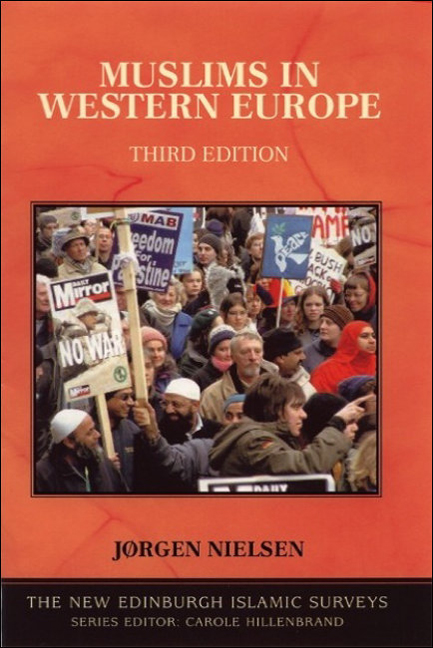2 - France
Published online by Cambridge University Press: 20 December 2017
Summary
Muslim immigration after 1962
Until the beginning of the 1960s, North African immigration into France had been overwhelmingly Algerian. Despite consistently higher unemployment rates among Algerian workers in France, and despite employers' continued preference for workers from southern Europe (mainly Portugal and Italy), Algerians continued to cross the Mediterranean. In the decade up to 1957, over 190,000 Algerians had arrived, mostly from the regions around Tizi Ouzou, Setif and Constantine in the north-eastern parts of Algeria. In the following decade the figure rose to almost quarter of a million.
The traditional lack of a coordinated and consistent foreign labour policy continued, until the rise in immigration became remarkable in the early 1960s. The major contribution to this change came, in fact, not from the Algerians but from Morocco and, to a lesser extent, from Tunisia. Migration from the Tunis conurbation and the border regions with Algeria started in the late 1950s, and settlement in France reached a total of close to 48,000 by 1964. This total jumped to 161,000 a decade later and then slowed down considerably. The Moroccan population of France had reached about 50,000 by 1962, but the next decade saw a massive growth to over 400,000. Algerian growth also took off, reaching a total of about 830,000 in 1977. These increases continued in different proportions until the mid-1980s (see Table 2.1).
The reaction of the French government was finally to try to adopt some form of immigration policy, which very quickly became a policy for control and limitation, as distinct from the earlier policies of facilitating labour immigration. To begin with, the policy was haphazard, consisting mainly of an accord with Algeria agreed in 1964. In a revision four years later, a limit of 35,000 annual immigrants was agreed, subsequently reduced to 25,000. In practice, these accords were virtually impossible to enforce, and the government was reduced to policing clandestine immigration. In response to the economic recession of 1974, controls were very rapidly tightened. This culminated in the period 1977–81 with a policy of subsidising migrants to return to their countries of origin. The aim was to achieve the return of 1 million people. However, the policy met with little success, and the legalisation of 130,000 clandestine settlers in 1981–2 amounted to an admission of failure.
- Type
- Chapter
- Information
- Muslims in Western Europe , pp. 8 - 24Publisher: Edinburgh University PressPrint publication year: 2015

